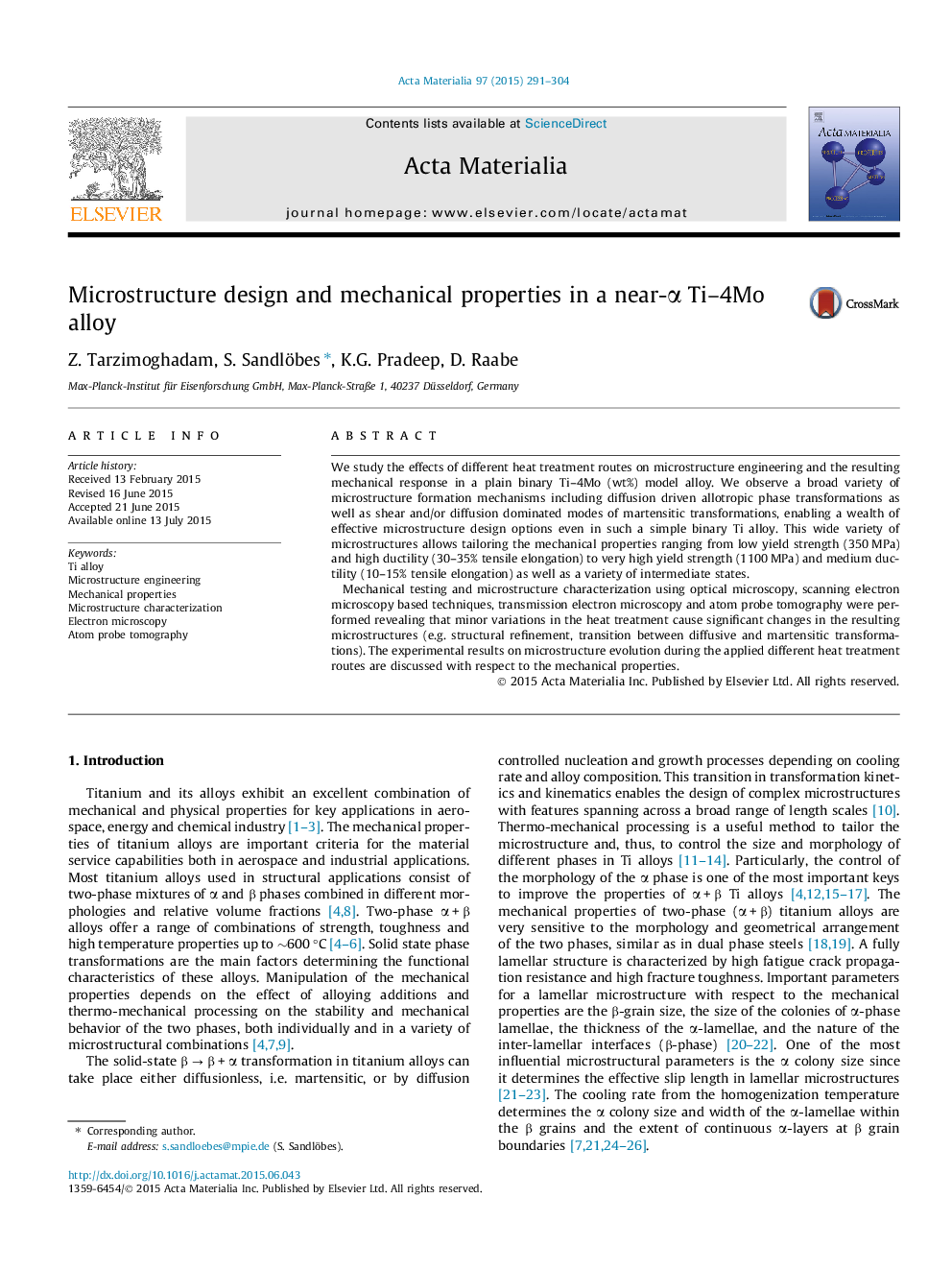| Article ID | Journal | Published Year | Pages | File Type |
|---|---|---|---|---|
| 1445325 | Acta Materialia | 2015 | 14 Pages |
We study the effects of different heat treatment routes on microstructure engineering and the resulting mechanical response in a plain binary Ti–4Mo (wt%) model alloy. We observe a broad variety of microstructure formation mechanisms including diffusion driven allotropic phase transformations as well as shear and/or diffusion dominated modes of martensitic transformations, enabling a wealth of effective microstructure design options even in such a simple binary Ti alloy. This wide variety of microstructures allows tailoring the mechanical properties ranging from low yield strength (350 MPa) and high ductility (30–35% tensile elongation) to very high yield strength (1100 MPa) and medium ductility (10–15% tensile elongation) as well as a variety of intermediate states.Mechanical testing and microstructure characterization using optical microscopy, scanning electron microscopy based techniques, transmission electron microscopy and atom probe tomography were performed revealing that minor variations in the heat treatment cause significant changes in the resulting microstructures (e.g. structural refinement, transition between diffusive and martensitic transformations). The experimental results on microstructure evolution during the applied different heat treatment routes are discussed with respect to the mechanical properties.
Graphical abstract(a) Bright-field transmission electron micrograph and selected area diffraction pattern depicting the near-Burgers orientation relationship observed between the α (hcp) and β (bcc) phases in Ti–4Mo after heat treatment 950 °C-WQ + 550 °C. (b) TEM bright field image, APT elemental map showing Mo atoms and (c) the corresponding 1-D concentration profile (bin width 0.5 nm) across the Mo enriched layer (cylindrical region of interest in (b)) showing very pronounced partitioning of Mo (red) of about 20 at% into a ∼20 nm thick β lamellar zone, strongly enhancing its stability against phase transformation.Figure optionsDownload full-size imageDownload high-quality image (89 K)Download as PowerPoint slide
